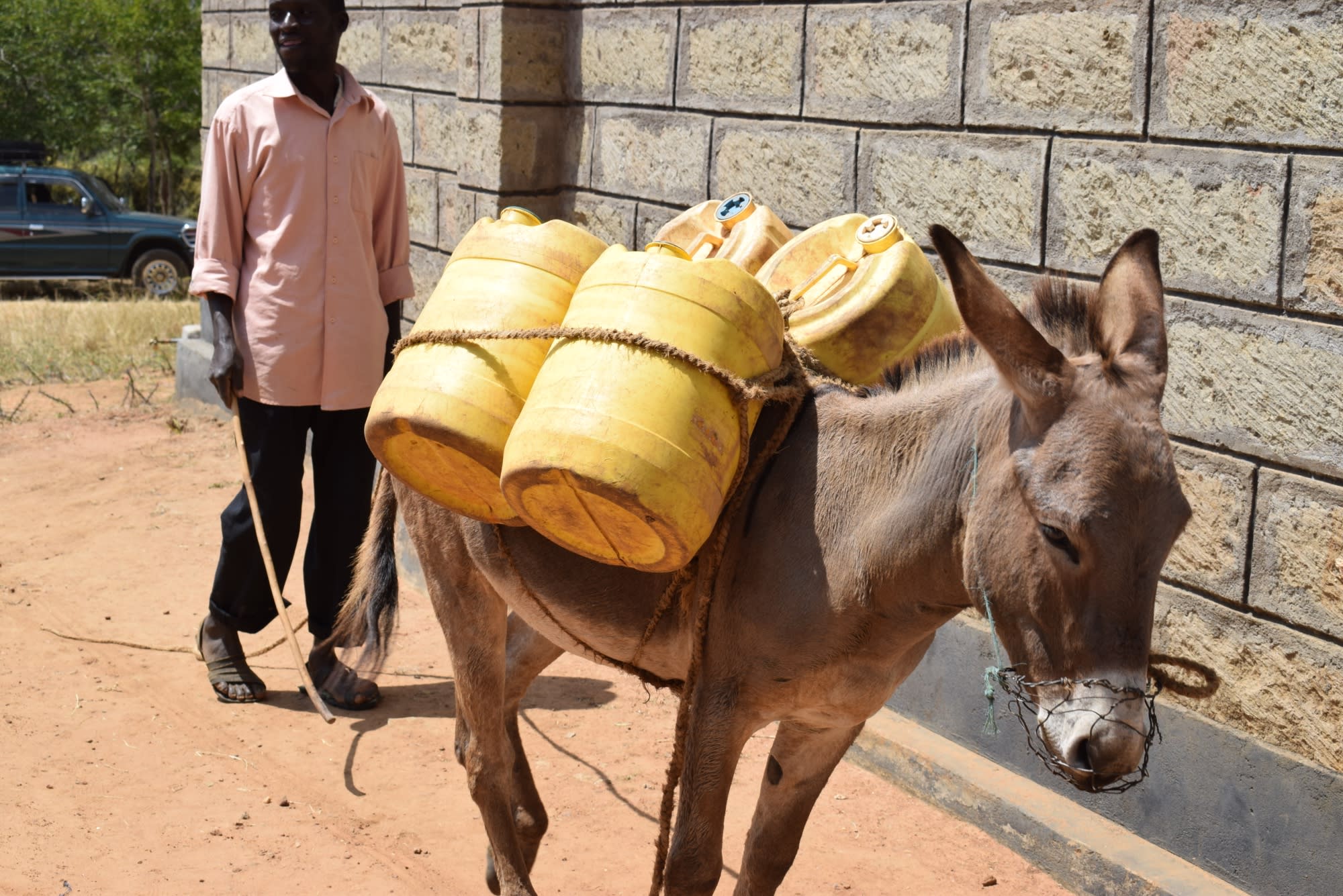Kyamatula Secondary School operates in large part thanks to the contributions of its 111 students' parents. These hardworking parents came together in 2012 to reopen the school four years after it was shut down due to insufficient funds. Their support over the past 7 years has helped grow Kyamatula Secondary School. They pooled their resources to buy a 10,000-liter plastic water tank a few years ago, but it is only big enough to hold water for three months out of the year.
The rest of the year, the parents pay a fee to have water delivered from the nearest river via donkey's back.

"Water is a big challenge in this region. Here in school, lack of water is a big deal," said student Eric Mwenda.
"Sometimes after lunch, you find students scrambling for water to drink because it is minimal and it can only be enough for a few students."
Getting enough water is costly for parents and the school, and the water they find isn't even clean. Many parents struggle to help pay for the school's water needs, a fee that is in addition to the per-student cost of the school lunch program. There have also been cases of students missing school due to issues of stomachaches and diarrhea, which are often diagnosed as waterborne diseases caused by drinking dirty water.
The water situation at Kyamatula Secondary School places a financial stress on the parents and a physical stress on the students.
"It is hard because at times we have no water at home and coming to school is our solace yet we feel more pressure here," said 18-year-old student Judith Syombua.
"After finishing our meals, we lack water for drinking. This makes life hard because we cannot concentrate in class. Imagine studying when you are thirsty. All you think of is water. There is nothing you can grasp in class. This has affected our studies greatly."
Rainwater Catchment Tank
We will build a 104,000-liter rainwater catchment tank for this school. This water will benefit the students, teachers, and supplementary staff. Parents will mobilize the materials needed for construction, such as sand and stone. They will also lend some strong arms to help with the actual construction.
The huge capacity of this tank makes the 10,000-liter plastic tank look tiny in comparison; 104,000 liters should be enough water to carry students and staff through the dry season if managed properly. As soon as the tank has time to cure, it can begin to collect rainwater for drinking, cooking, and cleaning!
Hygiene and Sanitation
The latrines are rarely washed due to the insufficient supply of water because the current water in the 10,000-liter tank is reserved for much more important uses such as drinking and cooking. There is no water kept near the latrines. Students rarely wash their hands after visiting the toilets due to lack of functional hand washing facilities.
Students and staff will be trained for one day. Those in attendance will form a school health club that will promote good hygiene and sanitation practices both at school and home. They will learn all of the steps to proper handwashing, how to treat water, and how to keep their environment clean. The school will also be taught how to best oversee and maintain their new rainwater catchment tank and handwashing stations.
Three handwashing stations will be delivered at the project’s completion. These are 1,000-liter plastic tanks fitted with four taps. The health club and school management will be responsible for making sure tanks are filled with water and that a cleaning agent such as soap or ash is available.

 Rainwater Catchment
Rainwater Catchment
 Rehabilitation Project
Rehabilitation Project































